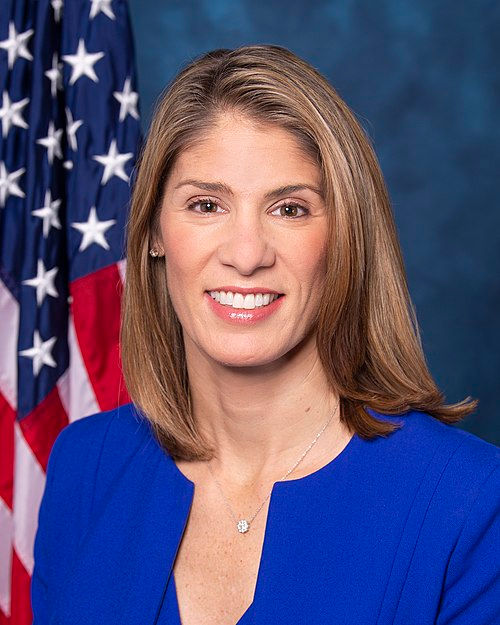Reimagining College Athletics: A Proposal for the "Federation of Collegiate Professionals" - (Part 1)
- Jason Meyer
- May 28
- 5 min read

I. Problem: A Collegiate Athletic System Strained by Unchecked Change
College athletics is experiencing a seismic shift. What was once a regulated, education-centered model is now spiraling into a commercialized, ungoverned pay-for-play system. At the heart of this transformation is the Name, Image, and Likeness (NIL) era—launched in 2021—granting college athletes long-overdue rights to profit from their personal brands. While the concept is ethically sound and legally justified, the NCAA’s lack of preparedness has allowed NIL to morph into a shadow professional system that is destabilizing nearly every stakeholder in college sports.
The original mission of the NCAA—to foster healthy competition among student-athletes while promoting academic achievement—is under threat. Today’s environment is one where money flows freely but without oversight, where competition is increasingly unequal, and where the educational foundation of college sports is being eroded. The core challenges are not theoretical—they are visible, measurable, and growing more urgent by the day.
Let’s break down the specific consequences facing each group of stakeholders:
Student Athletes: For decades, student-athletes were not compensated for the billions in revenue they helped generate. With NIL finally enacted, many athletes now receive deserved financial rewards. However, without structure, academic priorities have been diminished in favor of immediate financial gain; athletes face increasing pressure to build brands and manage business affairs; unscrupulous agents and third-party actors have entered the scene, often exploiting young athletes who lack proper representation or legal guidance; mental health concerns are growing as athletes face mounting pressure and public scrutiny without adequate institutional support.
College Coaches: Coaches, who are central figures in program stability—are now grappling with a lack of roster consistency. The combination of unregulated NIL deals and a wide-open transfer portal means, building long-term team culture is more difficult than ever. strategic planning and player development are constantly disrupted and many elite coaches are choosing to leave the profession entirely, frustrated by the instability.
Athletic Directors and Universities: Rather than focusing on student development or institutional integrity, many athletic departments are now consumed by a fundraising arms race. Their primary tasks include, managing the presence of NIL collectives, chasing donor money to keep up with peer institutions, navigating a chaotic and fast-changing landscape without consistent guidance or rules. This shift has turned what should be academic institutions into semi-professional sports enterprises—with all the stress and liability, but none of the governance infrastructure.
Conferences: The conference model has long been a pillar of college sports—organizing competition, preserving regional rivalries, and managing media rights. But in the NIL era conferences are racing to expand into new markets and acquire member schools; traditional rivalries are being sacrificed for TV ratings and broadcast footprints; and institutions are increasingly aligning based on commercial opportunity rather than geographic or academic compatibility. This scramble has turned the conference system into a fragmented, confusing, and unbalanced structure.
Competitive Balance: The most dangerous development of all: competition is no longer fair. Wealthy schools with deep-pocketed donors and strong NIL infrastructures are pulling away from their peers. Smaller programs, mid-majors, and even historically competitive schools are being left behind. College sports is fast becoming a contest not of strategy, coaching, or player development—but of cash reserves and external sponsorships.
If these trends continue unchecked, college sports as we know them will collapse into a semi-professional free-for-all, accessible only to a handful of elite institutions. The educational value will fade, Olympic and non-revenue sports will be defunded, and fan engagement will decline as the system loses its authenticity and competitive balance.
We are at an inflection point. Small reforms will not suffice. The time for bold structural change is now.
II. The Solution: The Federation of Collegiate Professionals (FCP)
To address these systemic failures, we propose the creation of the Federation of Collegiate Professionals (FCP)—a new governing body specifically tasked with managing the professionalized elements of major college sports.
This structure would not dismantle the NCAA. Instead, it would realign responsibilities so that each organization can thrive within its proper domain. The FCP would focus on major revenue-generating sports—primarily football and men’s and women’s basketball—while the NCAA would continue to govern Olympic and non-revenue sports, maintaining its amateur mission.
Key Features of the FCP Model
1. Structural Separation of Sports
Revenue sports would be managed under the FCP with full recognition of their commercial and professional nature. Meanwhile, sports that do not generate significant revenue would remain under the NCAA umbrella.
This division acknowledges the financial realities of modern sports, ensures Olympic and non-revenue athletes continue to receive opportunities and support, and allows each governing body to develop sport-specific policies and resources.
2. Salary-Based Contracts for Athletes
Players in the FCP would sign formal contracts with their schools, structured around:
Base salaries, determined by sport, school, and position.
Academic incentives, where progress toward a degree unlocks bonuses or extended contract terms.
Term commitments, creating roster stability while still allowing for movement within defined windows.
This approach brings transparency, predictability, and fairness to athlete compensation—replacing the current black-market-style NIL structure.
3. Regulated NIL Market
NIL would not be eliminated—but it would be regulated. The FCP would standardize NIL reporting and transparency, create guardrails to prevent NIL from being used as a recruiting bribe, and create a fee structure for all NIL collectives that would fund a centralized governance and compliance department to ensure NIL fairness. This ensures that athletes still benefit from their brand, but within a system that upholds fair competition.
4. A Reformed and Predictable Transfer Portal
The current transfer system has turned into free agency. Under the FCP transfer windows would be tied to the academic calendar and contract terms; movement would be limited to the terms of players’ contracts; buy-outs, trade, free-agency and draft protocols; institutions would be held accountable for player support post-transfer. These reforms would preserve athlete freedom while promoting continuity and responsible decision-making.
III. Expected Outcomes of the FCP Model
Implementing the FCP will fundamentally reshape the landscape of college sports—for the better. Here's what we expect:
The NCAA returns to its core mission of fostering academic-based amateur competition, while the FCP governs the professionalized, revenue-driving sports with appropriate expertise and resources.
Athletes are fairly paid, which reduces the reliance on donor-driven NIL collectives. Players understand their worth, their commitments, and their academic responsibilities.
By tying contract incentives to academic progress, schools and athletes maintain a shared commitment to the classroom—not just the field. Degrees remain attainable and valuable.
Coaches regain the ability to plan, develop talent, and build team cultures. Long-term strategies replace year-to-year chaos.
With structure and financial equity, legacy conferences, rivalries, bowl games, and tournaments can be preserved and enhanced—ensuring college sports retains its unique cultural value.
Regulated NIL and salary caps (if adopted) create more equal footing across institutions. Success returns to being about development, preparation, and teamwork—not just dollars.
Predictable movement windows and contract commitments reduce instability. Athletes still have choices, but programs and fans can once again rely on continuity.
United States professional leagues continue to access a talent pipeline that is critical for their continued growth and financial success
A unified structure will attract greater investment, better media deals, and clearer branding opportunities. College sports will operate with the financial power of a professional league—without losing its soul.
This growing revenue can then be equitably distributed across all levels of collegiate sports—ensuring adequate funding for all NCAA-affiliated colleges and universities.
IV. Conclusion: A Model for the Future
The Federation of Collegiate Professionals is not a radical departure—it’s an evolution. It is a necessary and practical response to the rapidly professionalizing world of college athletics. By embracing a two-tiered governance model, clearly defining roles, and prioritizing both competition and education, we can ensure that college sports survive—and thrive. The FCP is built on respect for athletes, commitment to education, and a belief that college sports can still be a force for community, pride, and personal growth. With bold leadership and swift action, we can preserve what makes college athletics great while modernizing it for the future.



Comments